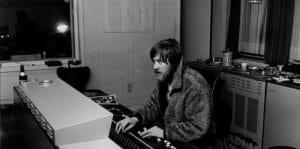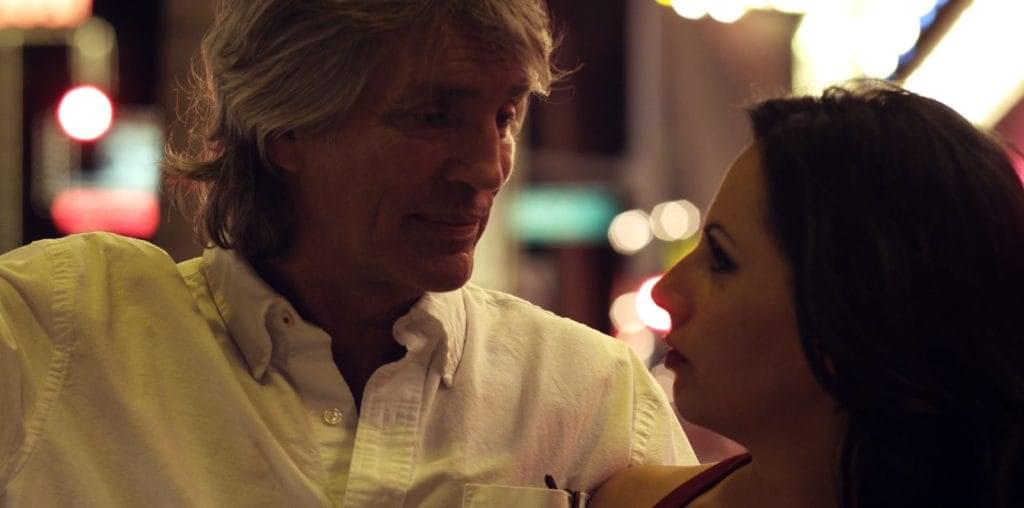
Few record producers had as much influence on European and American pop music of the 1970s and ’80s as did Conny Plank, the German master of the mixing board. It was Plank who helped shape the texture and quality of records released by innumerable performers of the day. David Bowie, Kraftwerk, Brian Eno, Gianna Nannini, Ultravox, Killing Joke and the Eurythmics were among the artists who made their way to Plank’s farmhouse studio near Cologne, Germany.
Conny Plank – The Potential of Noise is the portrait of a tireless experimenter, who in the grainy opening sequence shot in 1987 is collecting sounds on an audio recorder as he wanders through a Tokyo video game parlor. Talking to the camera, he explains what he’s up to.
“Any noise has potential to be music if it’s liked by another human,” he says, summing up a philosophy that speaks to his inventive spirit and fascination with unconventional sound collages.
But that upbeat moment of creative inspiration belies the fact that all was not well. That same year Plank died at age 47, leaving behind his wife, actress Christa Fast, and a 13-year-old-son, Stephan. It’s telling that despite his declining health, Plank chose to continue recording sound, as if he needed to absorb as much sonic material as possible while still able to do so.

“Any noise has potential to be music if it’s liked by another human…”
Twenty years later, Stephan made this documentary, in part as a tribute to his father, but also as a vehicle to learn more about Plank, the man who was often absent from his life. The filmmaker hits the road and speaks with a number of folks who express warm memories of the man. The portrait that comes into focus is that of a maverick, wholly dedicated to his art, who had the ability to hear music when others heard only noise. He was able to seamlessly weave those odd sounds into a pop song’s fabric, uniting rock, techno, and hip-hop with his avant-garde sensibilities. Apart from his genius at the mixing board, it seems he was well liked among his peers.
In one sequence the rap duo Whodini remember him fondly — one of the artists is nearly moved to tears recounting how Plank went out of his way to help him in the studio. “No one ever took that time with me,” he says. The unavoidable irony is that, at times, Plank may have been a better father figure to the artists he worked with than to his own son.
His recording studio was adjacent to the farmhouse where his family lived, so he was never far away. But it’s easy to imagine that being so near, yet so far was all the more painful for his son. Stephan doesn’t linger on this point but instead focuses on his father’s prolific output and intense creativity in the studio.
For her part, Christa served as hostess and provided the backup support needed when musicians would come to stay and record. One interviewee comments that she was “the glue that held everything together,” and was as important to the operation of the studio as was her husband.

“…his boundless imagination, advanced sound mixing skills and a sound laboratory [made it seem] almost anything was possible.”
What Plank provided was his boundless imagination, advanced sound mixing skills and a sound laboratory where it seemed almost anything was possible. Above all else, musicians, journalists, and music industry people whom Stephan interviewed agreed that Plank helped each artist realize his or her own vision. And he had an unmistakable touch. Although many of the acts Plank worked with sounded quite different from each other — from Devo and the Eurythmics to Kraftwerk and Ultravox — his aesthetic could be felt in each recording.
“He had the unique talent to push artists beyond their wildest dreams,” says Stephan.
Musician and producer Midge Ure notes that Plank was adventurous and completely willing to toss out whatever material or arrangements musicians were about to record and start from scratch. “The only place where you could do that was at Conny’s studio,” he says.
In 1987 Plank took Stephan to Japan, which is where the sequence in Tokyo at the beginning of the film was shot. Plank was diagnosed with cancer, and he knew that he needed to spend as much time with Stephan as possible.
It’s likely that in the making this documentary, Stephan came to terms with Plank’s insatiable urge to pursue his creative work. Perhaps the best way to understand another artist is to paint your own a portrait of him or her. Here, that seems to have worked well.

Conny Plank – The Potential of Noise (2018) Directed by Reto Caduff, Stephan Plank. Written by Reto Caduff, Stephan Plank, Ziska Riemann. Starring Gianna Nannini, Conny Plank, Annette Humpe.
7 out of 10 Moog Synthesizers


It’s available now on Amazon and Barnes and Noble.
when is it available on DVD? I cant wait to watch it.